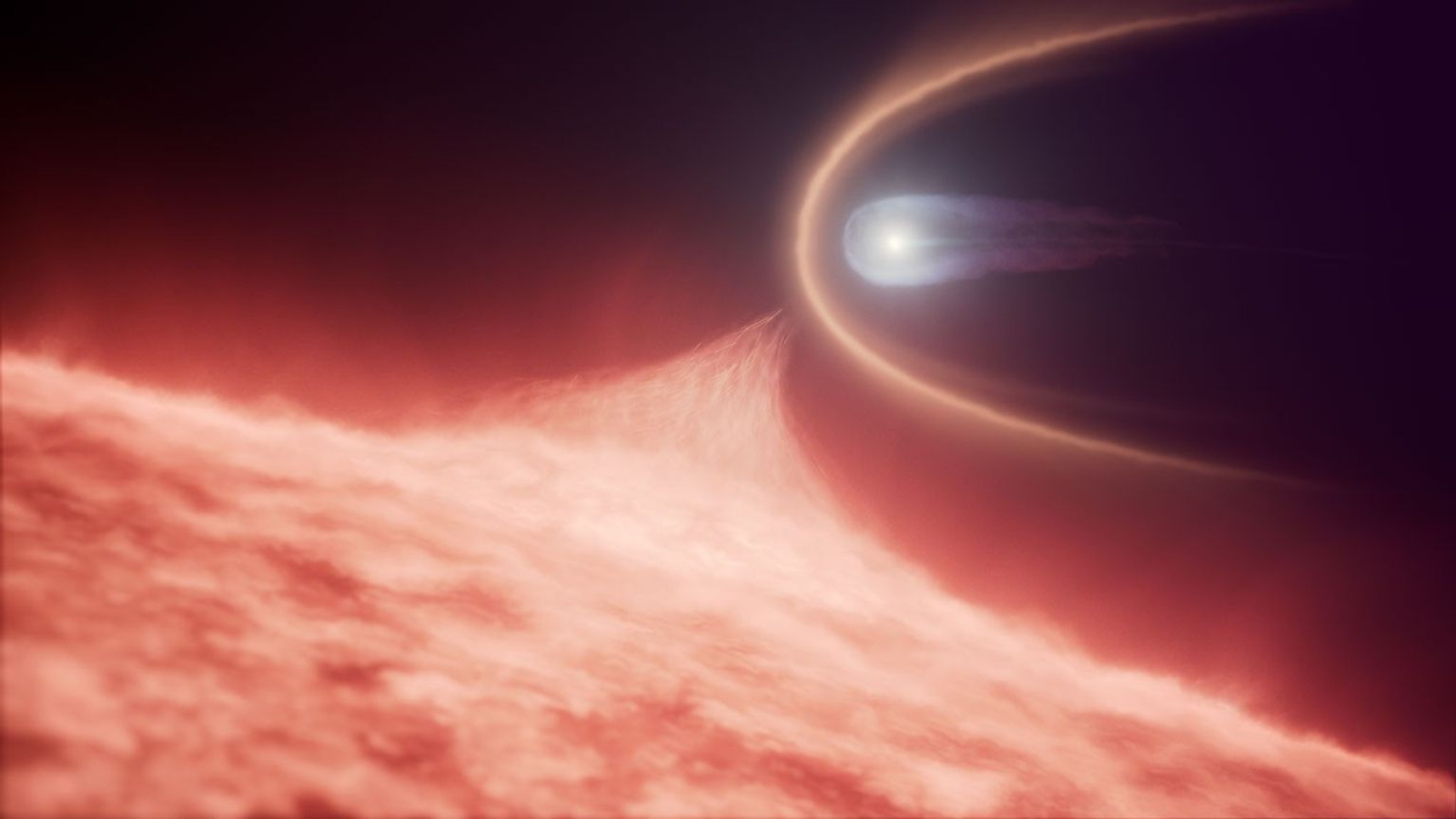Hubble telescope uncovers rare star born from cosmic collision: 'A very different history from what we would have guessed'
"It's a discovery that underlines things may be different from what they appear to us at first glance."
Astronomers using the Hubble Space Telescope have discovered that a seemingly ordinary white dwarf star is actually the result of a dramatic stellar merger.
This result, detailed in a new study led by Snehalata Sahu and Boris Gaensicke of the University of Warwick in the U.K., suggests that other "normal-looking" white dwarfs scattered throughout the universe could also have violent pasts.
"It's a discovery that underlines things may be different from what they appear to us at first glance," Gaensicke, study co-author and a professor of physics at the University of Warwick who serves as the principal investigator of the Hubble program, said in a statement. "Until now, this appeared as a normal white dwarf, but Hubble's ultraviolet vision revealed that it had a very different history from what we would have guessed."

The star, named WD 0525+526, is located about 128 light-years from Earth. Though it appeared rather standard at first glance through visible light, further observations using the Hubble telescope revealed telltale signs of a more turbulent origin, the new study reports.
White dwarfs are the dense remnants of stars like our sun that have exhausted their fuel supplies and collapsed into Earth-size objects. Despite their small size, however, they can pack in up to 1.4 times the mass of the sun. Most white dwarfs form from the predictable evolution of single stars nearing the final days of their life cycles, which is a path our own sun is expected to follow in about 5 billion years.
However, WD 0525+526 may have followed a very different path. Instead of forming from one dying star, it appears to have emerged from the violent collision and merger of two stars. This dramatic past, the new study says, left subtle but detectable fingerprints in the white dwarf's atmospheric makeup.
When Gaensicke and his team examined WD 0525+526 with Hubble's ultraviolet instruments, they detected an unusual amount of carbon in the star's atmosphere — a key sign the star was formed in a merger.
Breaking space news, the latest updates on rocket launches, skywatching events and more!
Typically, white dwarfs have outer layers of hydrogen and helium that obscure their carbon-rich cores. But in mergers such as this one, the intense collision can strip away much of these outer layers, allowing carbon to rise to the surface. The signals of such stars are difficult to detect in visible light, but become clearer in ultraviolet wavelengths — and that's where Hubble excels.
WD 0525+526 is remarkable even among the small number of white dwarfs known to be merger remnants, according to the statement. It has a surface temperature of nearly 21,000 Kelvin (about 37,000 degrees Fahrenheit) and a mass 1.2 times that of the sun, making it both hotter and more massive than others in this rare category, the study notes.
Because WD 0525+526 appeared completely normal in visible light, astronomers now suspect that many more white dwarfs could be hiding similar explosive origins.
"We would like to extend our research on this topic by exploring how common carbon white dwarfs are among similar white dwarfs, and how many stellar mergers are hiding among the normal white dwarf family," Antoine Bedrad, a researcher at the University of Warwick who co-led the study, said in the statement.
"That will be an important contribution to our understanding of white dwarf binaries, and the pathways to supernova explosions."
This research is described in a paper published Aug. 6 in the journal Nature Astronomy.

Sharmila Kuthunur is an independent space journalist based in Bengaluru, India. Her work has also appeared in Scientific American, Science, Astronomy and Live Science, among other publications. She holds a master's degree in journalism from Northeastern University in Boston.
You must confirm your public display name before commenting
Please logout and then login again, you will then be prompted to enter your display name.
